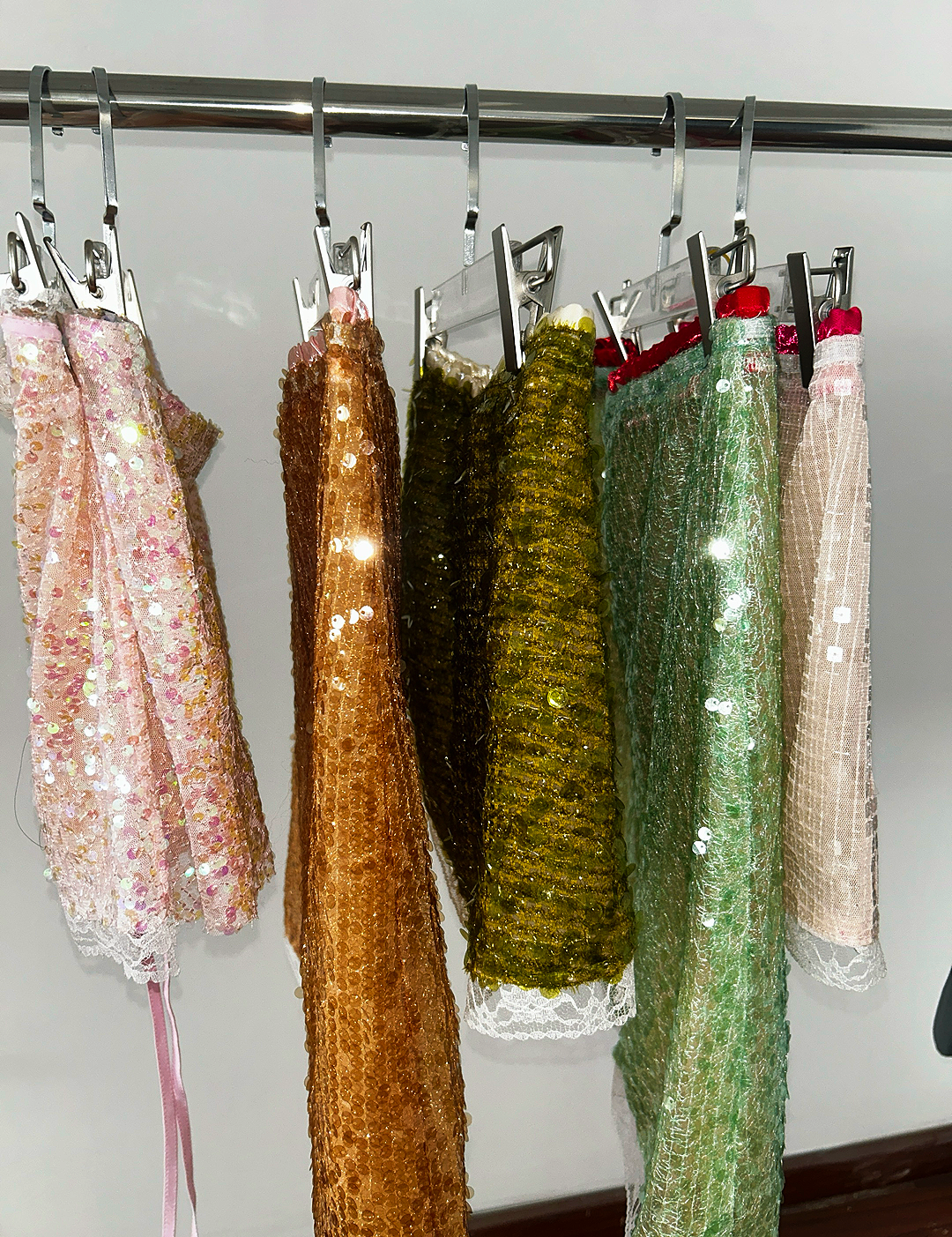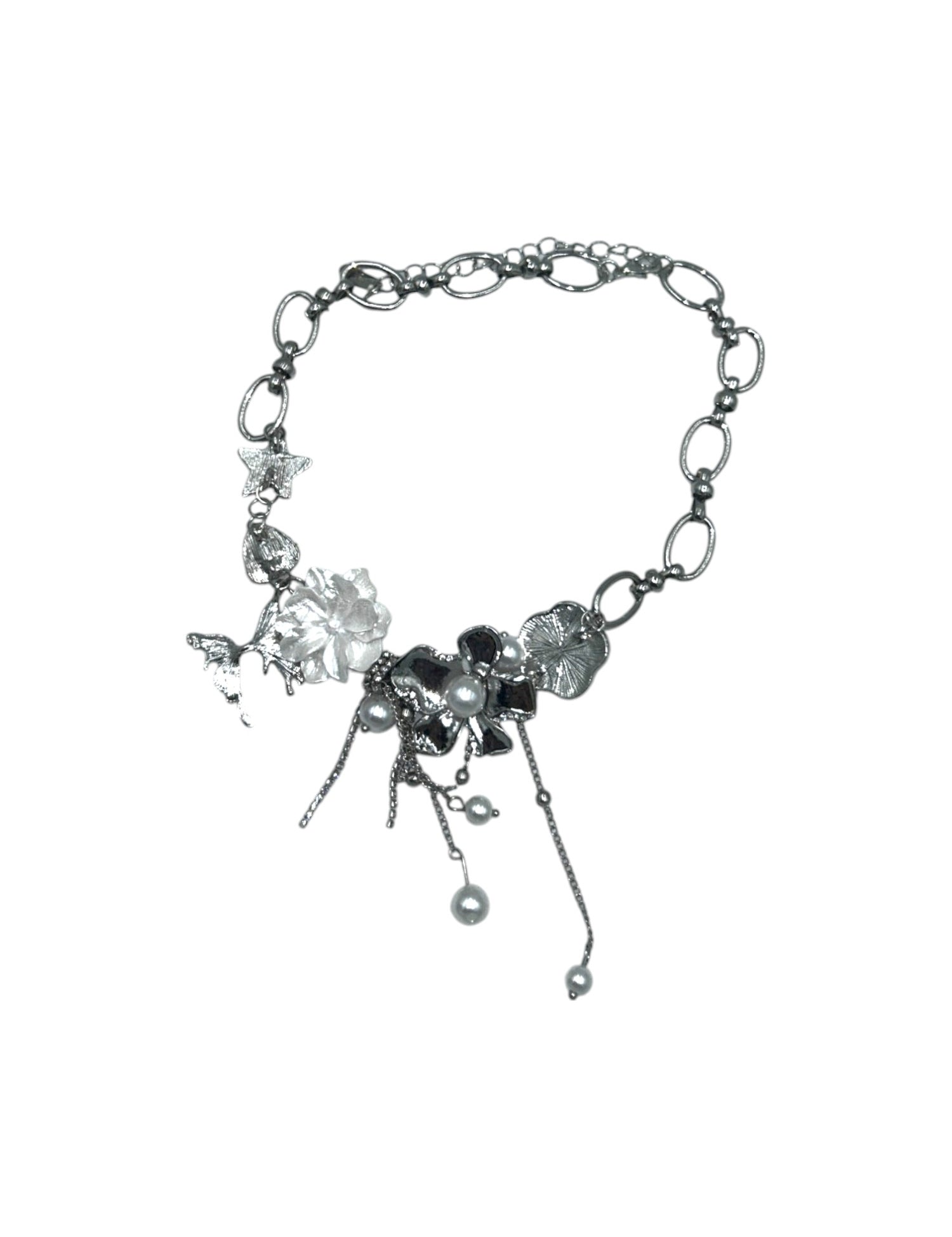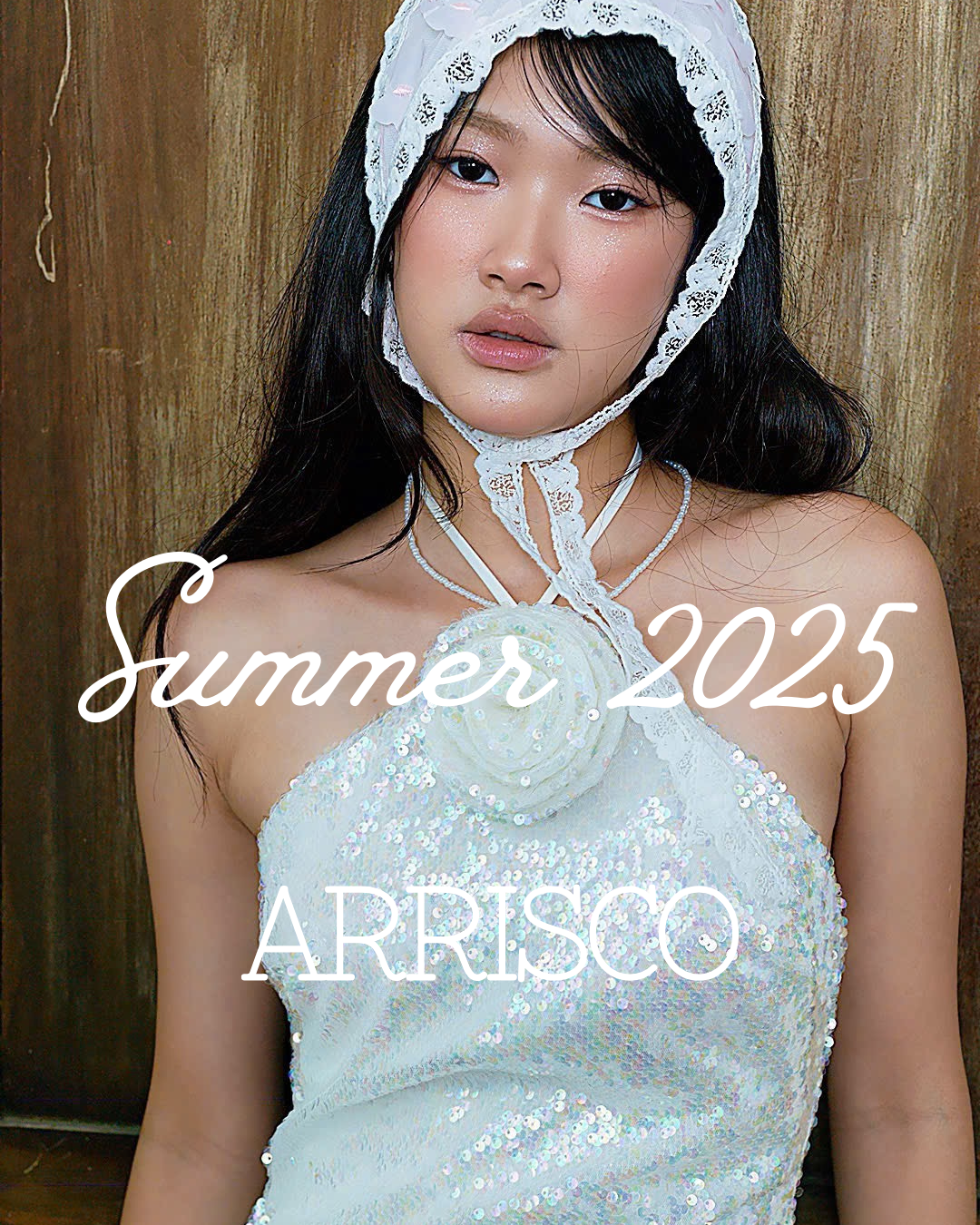We've all been there. You find the perfect outfit online, wait with breathless anticipation for the package to arrive, and then... it doesn't fit. Not even close. That whole frustrating cycle of buying, trying, and returning is a headache we all know too well. But what if you could skip all that? Virtual fitting room technology is here to do just that, turning your phone or computer into a personal try-on space and ending the guesswork for good.
Welcome to the Future of Online Shopping
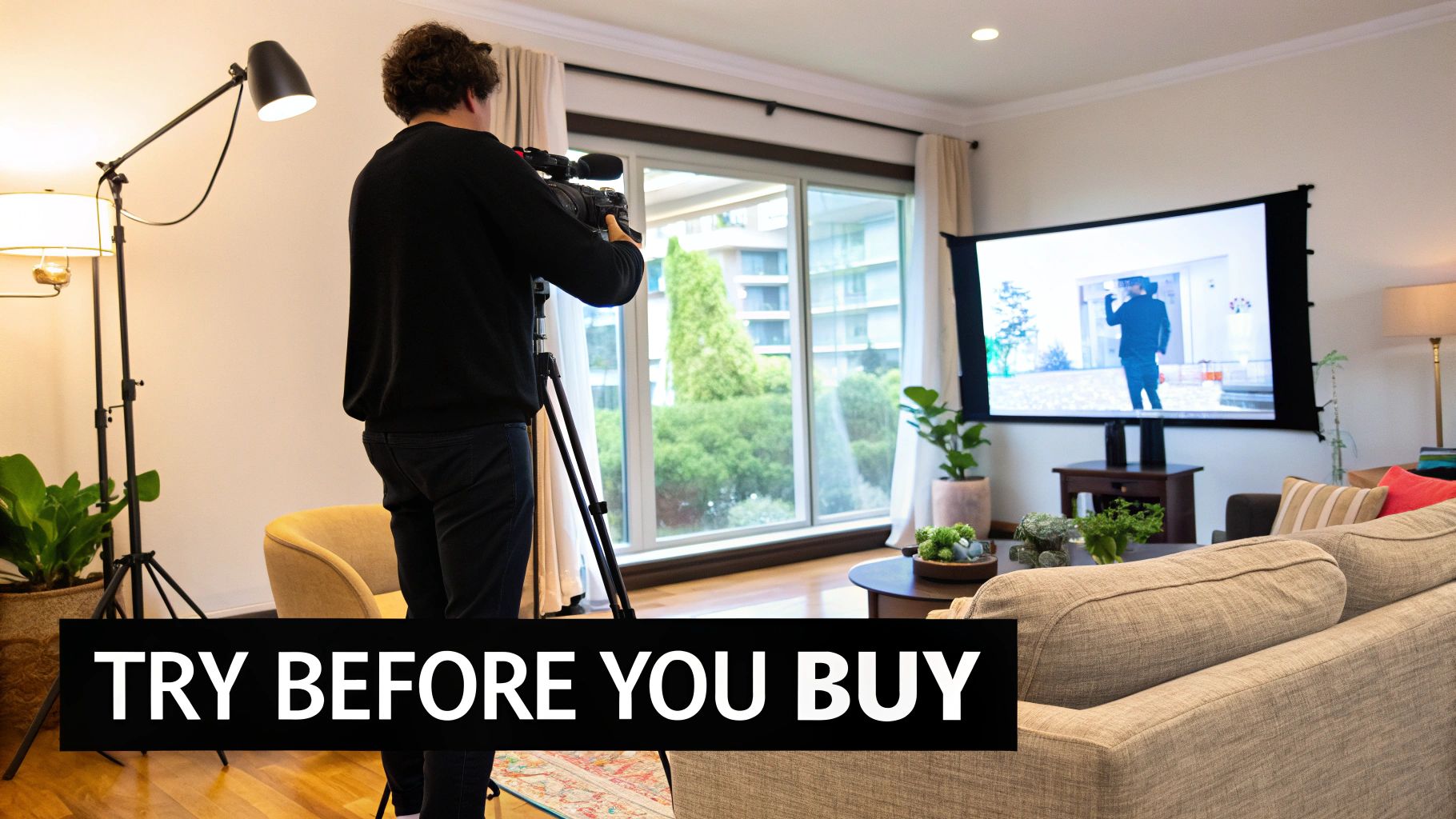
Shopping online is supposed to be fun, not a high-stakes gamble. For years, the single biggest hurdle in e-commerce has been the inability to physically try on clothes. That uncertainty creates a domino effect of problems for everyone—from shoppers with closets full of clothes that don't fit right to brands dealing with costly and environmentally damaging returns.
This is exactly where virtual fitting rooms are changing the game. Don't think of it as a gimmicky filter; think of it as your personal digital tailor. It cleverly blends artificial intelligence (AI) and augmented reality (AR) to build a bridge between the online store and your actual body. No more staring at confusing size charts or just crossing your fingers and hoping for the best. This is all about making smart, confident, and happy purchases from the very first click.
A New Era of Confidence for Shoppers
At its core, the promise of this tech is wonderfully simple: bring confidence back to online shopping. It directly addresses the biggest pain points, making the entire experience more personal, enjoyable, and far less of a chore.
For those of us who shop with intention, this is a massive win. It encourages a more thoughtful approach to building a wardrobe, which fits perfectly with the ideals of sustainable fashion. When you make smarter choices from the start, you're embracing the very principles we talk about in our guide on slow fashion vs fast fashion.
This new way of shopping gives you some serious advantages:
- No More Sizing Guesswork: Get spot-on size recommendations based on your unique body.
- Visualize the Fit: Actually see how a fabric will drape or a silhouette will look on your shape before you buy.
- Shop with Certainty: Finally, you can ditch that nagging "but will it fit?" feeling that kills so many potential purchases.
- Fewer Hassle-Filled Returns: Save yourself the time, energy, and disappointment of sending things back.
Fueling a Retail Revolution
The buzz around virtual fitting room technology isn't just about making things easier for us shoppers; it's kickstarting a huge shift across the entire retail industry. This tech is quickly going from a "nice-to-have" novelty to an absolute must-have, and the market growth is staggering.
The global virtual fitting room market was valued at approximately USD 5.57 billion in 2024. Projections show it’s set to skyrocket to around USD 20.65 billion by 2030, showcasing its massive impact on the future of e-commerce.
That explosive growth is a crystal-clear signal that both brands and customers are hungry for a better way to shop. Retailers are already seeing incredible results like lower return rates and happier, more loyal customers. At the same time, we're finally getting the personalized, "made-for-me" experience we've been waiting for. As this technology gets even smarter and more common, it's set to make online shopping more personal, more confident, and more exciting than ever before. A new chapter in retail is truly beginning.
How Virtual Try-On Technology Really Works
Ever wondered about the magic behind trying on clothes through your screen? It’s not smoke and mirrors! It's actually a fascinating mix of smart data, artificial intelligence, and a little visual wizardry. The core idea is surprisingly simple: create a "digital twin" of you, bringing the fitting room right to your living room.
It all starts with you, of course. For the tech to work its magic, it first needs to understand your unique body shape. Don't worry, this part is designed to be super easy.
Starting with Your Unique Shape
The entire experience really hangs on creating an accurate model of you. Most virtual fitting room technology gives you a few simple ways to share this key info. You can often kick things off by just plugging in basic details like your height, weight, and general body shape.
For an even better fit, a lot of modern systems use your smartphone’s camera. This isn't just snapping a selfie; it's a quick, guided body scan that grabs your key measurements in seconds. The whole point is to collect the data the AI needs to build your digital avatar. And hey, if you're wrestling with different sizing systems from international brands, our complete international size chart conversion guide is a lifesaver.
This infographic below shows you just how simple the workflow is, breaking down how your input gets turned into a full-on virtual try-on.
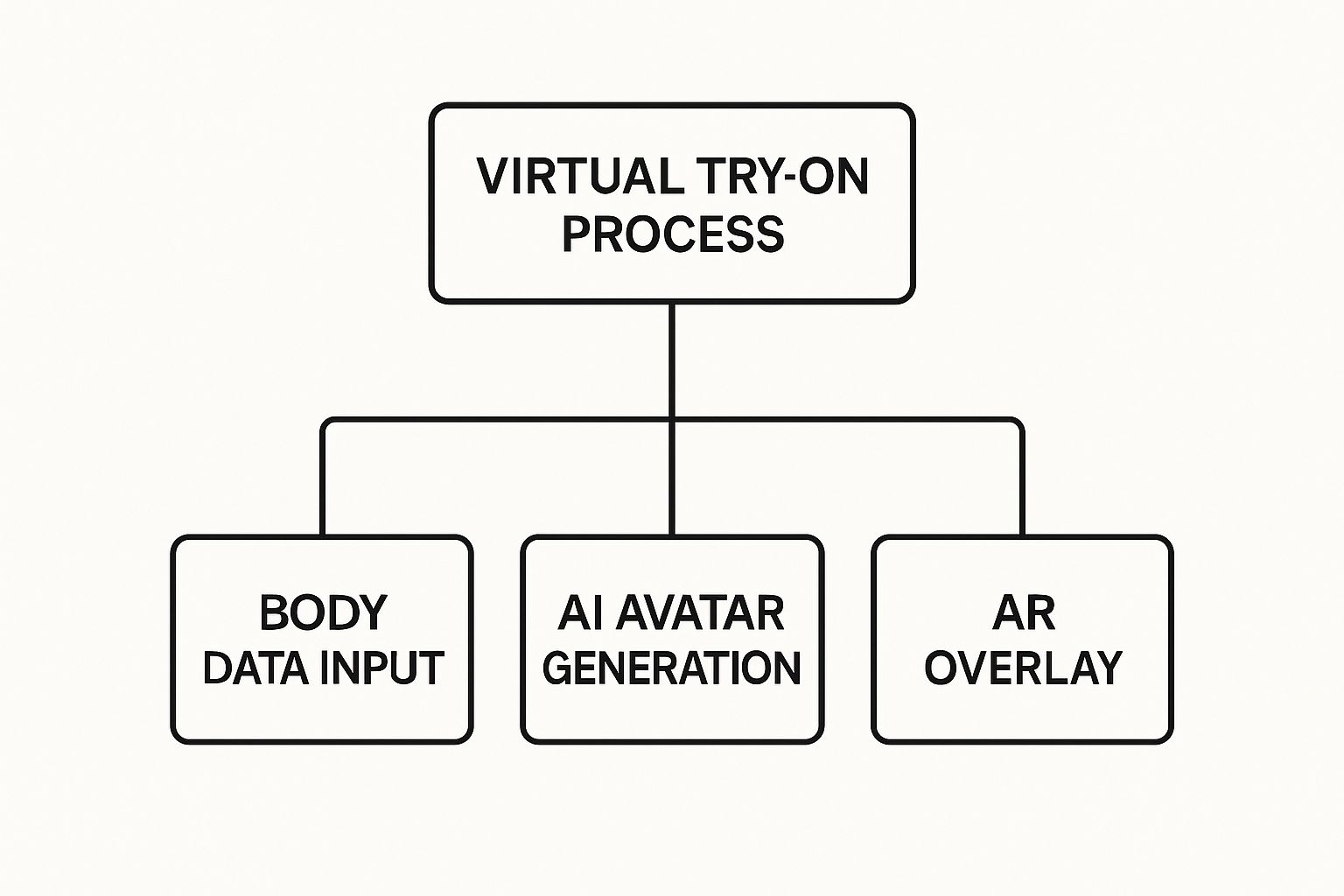
As you can see, it’s a seamless hop from capturing your data to getting a personal avatar and finally seeing the digital clothes come to life.
AI Creates Your Digital Twin
Okay, so the system has your measurements. Now what? This is where powerful AI algorithms jump into action. They crunch all that data to build a personalized 3D avatar that genuinely reflects your body’s proportions. This isn't some generic mannequin; it's a digital you.
This avatar is the foundation for everything that comes next. It’s your stand-in, ready to model any dress, shirt, or pair of pants you’re curious about. The accuracy of this digital twin is what makes today's virtual fitting room technology so incredibly effective, leaving old-school sizing charts in the dust.
By creating a precise digital replica, the technology can predict fit with remarkable accuracy. This personalization is what shoppers crave—in fact, 71% of consumers now expect personalized experiences from brands they shop with.
With your avatar good to go, it's time to bring the clothes into the picture. Augmented reality (AR) adds that final touch of magic, blending the digital garments with your avatar or even a live video of you.
Two Ways to See the Fit
Not all virtual try-ons are built the same. The technology typically takes one of two main routes to show you how an item will look, and each gives you a different vibe.
The first approach is a 2D overlay.
- How it works: Think of it like a high-tech digital sticker. It takes a flat picture of the clothing and just places it over your photo or live video.
- Best for: This is perfect for getting a quick feel for an item’s color, pattern, and general shape. It’s fantastic for things like sunglasses, hats, or even makeup.
The second, more advanced method is 3D rendering.
- How it works: This is where things get really cool. The tech uses a detailed 3D model of the garment and actually drapes it onto your 3D avatar. It even understands fabric physics, showing you how silk would hang differently than a stiffer material like denim.
- Best for: It delivers a seriously realistic, 360-degree view of the fit. You can see how the item moves and contours to your specific body shape.
This advanced 3D approach is what truly closes the gap between browsing online and trying on in-store. It gives you that boost of confidence to know exactly how that perfect dress will look before you even think about clicking "add to cart."
The Tech Behind Your Digital Wardrobe
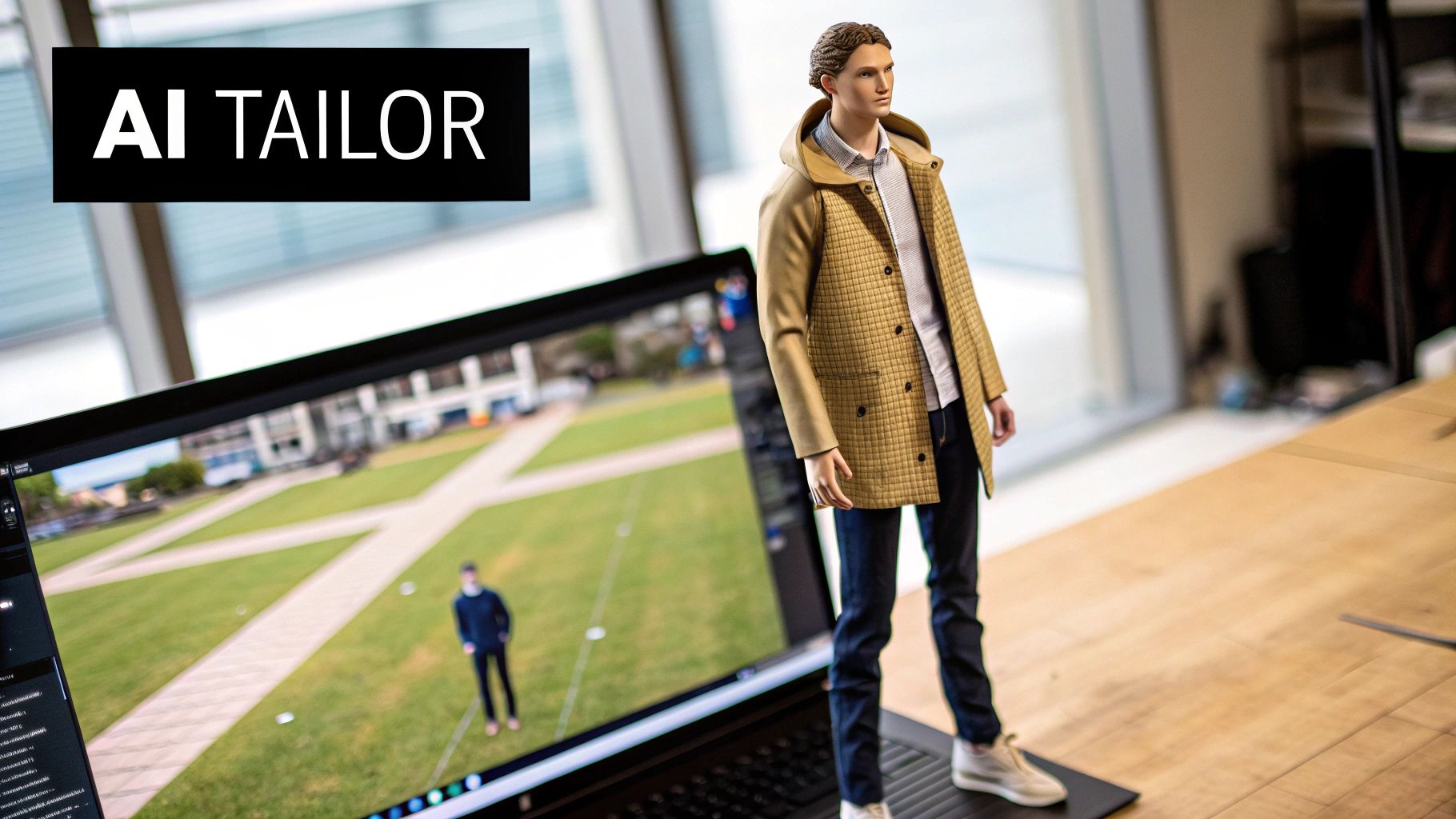
Ever wondered how this amazing virtual fitting room technology actually pulls off such a personal and realistic experience? It’s not just one piece of tech, but a brilliant team of three digital innovators working together behind the curtain. Think of them as a master tailor, a visual effects pro, and a digital sculptor, all collaborating to bring your wardrobe to life right on your screen.
Each one has a distinct yet totally connected role. Artificial Intelligence is the brains, Augmented Reality brings the visual magic, and 3D modeling gives the digital clothes their shape and feel. Let's pull back the curtain and see how this tech trio works in perfect sync.
Artificial Intelligence: The Smart Stylist
At the core of every great virtual fitting room, you'll find Artificial Intelligence (AI). Its main job is to act like your personal Savile Row tailor, taking the raw data about your body shape and instantly translating it into a spot-on size recommendation. This is the engine that finally kills the guesswork in online shopping.
It’s a bit like the recommendation algorithm on your favorite streaming service. Just as Netflix learns your movie tastes to suggest your next binge-watch, the AI in a virtual try-on analyzes your measurements to predict which size will fit you best. This goes way beyond a generic size chart; the AI gets the nuances of different brands' sizing and how certain fabrics fit, delivering a recommendation with jaw-dropping accuracy.
Augmented Reality: The Visual Wizard
Once the AI has nailed down your perfect size, Augmented Reality (AR) steps in to handle the visuals. AR is the wizard that superimposes the digital clothing onto your real-world image, whether that’s a live feed from your camera or a photo you’ve uploaded. This is what creates that “wow” try-on moment.
This tech seamlessly blends the digital and physical worlds. It projects the garment onto your body, letting you see exactly how that shade of red complements your skin tone or how a particular neckline actually looks on you. AR is the bridge that lets you visualize the product in your own space, making the whole experience feel tangible and real.
By merging digital information with the user's environment in real time, AR helps shoppers make much more informed decisions. In fact, research shows that a whopping 40% of consumers would be willing to pay more for a product if they could experience it first through AR.
3D Modeling: The Digital Sculptor
Finally, we have 3D modeling, the tech that gives digital clothes their realistic shape, texture, and movement. This is what separates a basic, flat overlay from a truly immersive virtual try-on. Instead of just a picture of a shirt, you get a lifelike digital version of the real thing.
Sophisticated software is used to build incredibly detailed 3D models of each item. These models account for everything, from the fabric's weight to the way it drapes and folds. This allows you to see how a silk blouse flows versus how a structured denim jacket holds its shape, all on your unique digital avatar. For a deeper look at how fashion and tech are colliding, check out our article on the intersection of fashion and wearable tech.
To put it all together, here’s a quick breakdown of how these technologies team up.
Key Technologies in Virtual Fitting Rooms
| Technology | Primary Function | User Benefit |
|---|---|---|
| Artificial Intelligence (AI) | Analyzes user body data to predict the best size and fit. | Eliminates sizing guesswork and provides confident, accurate recommendations. |
| Augmented Reality (AR) | Overlays digital garments onto the user's real-world image. | Allows shoppers to visualize how clothes look on their own body instantly. |
| 3D Modeling | Creates realistic, detailed digital versions of clothing items. | Shows how fabric drapes, moves, and fits, creating a true-to-life preview. |
Together, these three create a powerful and seamless experience that's changing how we shop.
This tech isn't just a cool gimmick; it's a direct response to a major shift in retail. As e-commerce continues to take over, AR/VR-enhanced virtual try-ons help stores boost customer engagement and, crucially, slash those costly product return rates. Virtual fitting room technology is right at the forefront, showcasing some of the top technologies in e-commerce that are giving online stores a serious advantage.
A Win-Win for Shoppers and Brands Alike

The buzz around virtual fitting room technology is about more than just a neat gimmick—it’s creating a fantastic situation where everyone comes out ahead. For shoppers, the benefits are instant and deeply personal, completely flipping the script on how we buy clothes online. For brands, the results are just as powerful, solving some of the most frustrating and costly headaches in e-commerce.
It’s this amazing synergy where delighted customers directly create healthier, more successful businesses. By closing that gap between a digital storefront and your actual closet, this tech fosters a fashion world that's more confident, sustainable, and frankly, a lot more fun.
A Game Changer for Shoppers
If you’ve ever stared at a size chart and felt that wave of anxiety—"but will it actually fit me?"—then virtual try-ons are the breath of fresh air you’ve been waiting for. This technology gives you a huge boost of confidence, empowering you to click "add to cart" on styles you might have previously just scrolled past.
The most obvious win? Waving goodbye to the hassle of returns. No more taping up boxes, hunting for a printer, or making that dreaded trip to the post office. When you get the size right the first time, you save so much time and avoid the letdown of an item that just doesn't work.
This all adds up to a much more personal and engaging way to shop. Virtual fitting rooms are a prime example of top-tier ecommerce user experience best practices because they change the entire dynamic. Instead of just guessing based on a model, you get to see how a garment drapes and fits on your body. It just feels right.
This personal connection is everything to the modern shopper. It’s about feeling seen and understood, which is a huge part of our philosophy here at Arrisco. We’re passionate about celebrating every body, and you can read more about our commitment in our guide to fashion for all bodies and inclusivity in style.
A Powerhouse for Brands
Switching gears to the business side, the advantages of virtual fitting room technology are massive and you can see them right on the bottom line. The single biggest impact is the massive drop in product returns, a problem that has been a thorn in the side of the fashion industry for decades.
Returns aren't just a logistical nightmare; they're a huge financial drain and have a serious environmental cost. Every single item sent back costs money in shipping, processing, and restocking—and a shocking number of them can’t even be resold.
Here’s the incredible part: studies show that brands using virtual try-on technology can slash their return rates by up to 36%. That number represents real money saved, a ton of waste avoided, and a much greener operation.
But it's not just about cutting costs. This technology is a rocket booster for sales. When you remove a customer's uncertainty, conversion rates naturally go up. Shoppers who feel sure about their size selection are way more likely to follow through with their purchase instead of getting cold feet and abandoning their cart.
That amazing, seamless experience also builds incredible brand loyalty. A customer who buys something that fits perfectly on the first try is a customer who will be back again, because they trust you to get it right.
Finally, the data collected from virtual try-ons is pure gold. Retailers get an unprecedented look into how their clothes actually fit a wide range of real people. This data allows them to:
- Improve Product Designs: Tweak patterns and grade sizes to better match their actual customers.
- Sharpen Inventory Management: Make smarter calls on which sizes and styles to stock up on.
- Personalize Marketing Efforts: Show customers the styles that are most likely to fit and flatter them.
This data-first approach creates a fantastic cycle: brands serve their customers better, which leads to happier customers and even better products. This isn't some niche trend, either. The technology is exploding, especially in North America, which claimed a huge 38.88% share of the global virtual fitting room market in 2024. That tells you just how essential these tools are becoming.
The Next Wave of Virtual Shopping Innovation
If you think today's virtual fitting room technology is cool, just wait. We're on the verge of a completely new retail world, where the wall between online and in-store shopping doesn't just get blurry—it completely crumbles. The innovations just around the corner are going to make current virtual try-ons feel like a charming first draft.
Imagine hopping online to shop with your best friends, even if you’re scattered across the country. That's exactly where we're headed with social commerce and virtual reality. Soon, you'll be able to meet up as avatars inside a brand's digital flagship store in the metaverse, browse the racks together, and get instant opinions on your new look.
This is a huge deal. It turns what's often a solo online task back into the fun, social outing we've always loved. It’s not just about seeing clothes on a digital model anymore; it's about sharing an experience and building a real community around a brand.
Feeling the Future with Haptic Feedback
One of the most mind-blowing advancements coming our way is haptic feedback. This is the tech that will finally close the sensory gap that’s always been part of e-commerce: not being able to touch anything. For the very first time, you'll be able to feel the texture of a garment right through your screen.
Seriously, think about it. You could run your fingers over your phone and feel the buttery softness of a leather jacket or the rugged weave of a denim shirt. Haptic tech uses tiny, precise vibrations and force feedback to mimic the sensation of touch, adding a whole new, tactile layer to the virtual try-on.
This isn't just a gimmick; it’s a game-changer. Feeling the weight and texture of fabric is a massive part of why we buy things, and haptics will make that possible from your couch.
Hyper-Personalization with AI Stylists
Artificial Intelligence is also about to get a major promotion. AI is moving way beyond just suggesting the right size. It's evolving into your own personal stylist, putting together entire looks that are created just for you.
These AI stylists will get to know you by analyzing a ton of different signals:
- Your Body Shape: It will understand which cuts and styles will look amazing on you.
- Your Style History: The AI will learn from your past purchases and maybe even your social media posts.
- Current Trends: It will keep you in the loop by suggesting on-trend items that still feel like you.
The big idea is to shift from reactive recommendations to proactive styling. Instead of you hunting for an outfit, your AI stylist will greet you with looks it knows you’ll adore. It makes discovering new styles feel effortless and genuinely exciting.
This kind of deep personalization builds a ton of trust and makes you feel like a brand really gets you.
Blending Worlds with Smart Mirrors
Finally, virtual fitting room technology is escaping the website and heading into physical stores. Get ready to see interactive smart mirrors become a standard feature in changing rooms, perfectly mixing the best of digital and physical shopping.
With these mirrors, you could instantly try on a different color or a whole new outfit without getting undressed. You could check how a different size might look, call for an assistant, or get styling tips—all from a sleek, interactive screen.
This fusion makes the in-store trip way more efficient, fun, and even a little bit magical. It proves the future of retail isn't about online versus offline. It's about one seamless, amazing experience. The future is interactive, ridiculously personal, and just plain cool.
Your Virtual Fitting Room Questions Answered
New technology is always exciting, but it also brings up a ton of questions. As virtual fitting room technology starts to pop up in more of our favorite online stores, it's completely normal to be curious. From wondering how accurate it really is to thinking about data privacy, getting the facts helps you shop with total confidence.
We’ve pulled together the most common questions we hear from shoppers about virtual try-ons. Let's jump in and clear things up so you can have fun with this incredible new way to shop!
How Accurate Is This Stuff, Really?
This is the big one, isn't it? The truth is, the accuracy of virtual try-ons has come an incredibly long way. Modern tools that use smart AI and body scanning can be amazingly precise, often getting within just a few centimeters of your real-life measurements. The secret is giving the system good information—the better your measurements or the clearer your scan, the more spot-on the size recommendation will be.
Of course, it can't perfectly capture the feel of a specific fabric on your skin. But its ability to predict whether a shirt will be too tight in the shoulders or if a pair of jeans will be too loose in the waist is a massive game-changer for buying clothes online. This accuracy is exactly what helps crush those frustrating returns.
In fact, retailers using this tech have seen a huge drop in returns, with some reporting decreases of up to 36%. That number alone shows just how good these tools are at getting the size right the first time.
Is My Personal Data Safe?
This is a totally valid concern, and any company worth its salt makes data privacy a top priority. When you use a virtual fitting room, your body data is used to calculate measurements, and the original images are typically anonymized or deleted immediately after. The system isn't storing photos of you; it's just processing the numbers to find your perfect fit.
The best platforms use secure, encrypted methods to handle your information and are built to follow strict data protection laws like GDPR. If you want to feel extra secure, it's always smart to check out the retailer's privacy policy. It will give you a clear, no-nonsense breakdown of how your data is being handled and kept safe.
What Do I Need to Use a Virtual Fitting Room?
Honestly, one of the best things about this technology is how easy it is for everyone to use. You don't need any fancy gadgets or expensive equipment to get in on the action!
For most online stores, you just need a device you already have:
- A smartphone with a camera.
- A laptop or desktop computer with a webcam.
That's it! The tool is built right into the store's website or app. It walks you through a super quick process—usually less than two minutes—making it a totally seamless part of your shopping trip. No extra downloads, no special hardware. Simple.
Does This Work for More Than Just Clothes?
Absolutely! While clothes are where virtual try-ons really shine, the technology is incredibly versatile and is showing up in all sorts of new places. It's already a massive hit for eyewear, letting you see exactly how different frames look on your face from every angle.
But it doesn't stop there. You can also virtually try on:
- Makeup: See how that bold new lipstick or shimmery eyeshadow looks with your unique skin tone.
- Jewelry: Check out the size and style of earrings, necklaces, or even watches.
- Hats & Accessories: Find the perfect hat or scarf to complete an outfit.
The same core AI and AR magic can be applied to a huge range of products. This makes it possible to see how almost anything will look on you before you hit "buy." Getting the right fit is especially important for intricate items like lingerie, where precise measurements are everything. To help with that, you can learn more by checking out our guide on how to calculate your bra size correctly.
The world of virtual try-ons is growing every day, making online shopping more personal and fun than ever before. It's all about giving you the power to make choices you’ll absolutely love.
At Arrisco, we believe smart technology should create a better, more confident shopping experience for you. Explore our collections and see how we’re making fashion more personal and sustainable.

